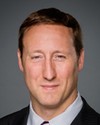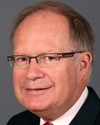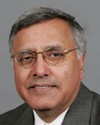Thank you, Mr. Chairman.
Before I begin, I would like to introduce my colleagues.
We have Dan Ross, the assistant deputy minister (materiel) from the Department of National Defence, and Bill Pentney, the assistant deputy minister. Of course everyone will know and recognize the Chief of the Defence Staff, General Walt Natynczyk. We also have the deputy minister, Rob Fonberg; Vice-Admiral Denis Rouleau; and Kevin Lindsey, assistant deputy minister, finance and corporate services.
Ladies and gentlemen, colleagues, committee members, and members of our support staff who are with us, thank you for inviting me here to discuss Department of National Defence supplementary estimates this morning.
I'm pleased to have the opportunity to explain how the government is investing in our Canadian Forces and supporting the Canadian economy. As you all know very well, we ask a lot of the men and women of the Canadian Forces. Their job is to defend Canada and Canadians, at home and abroad.
In the complex and unpredictable world that we live in, this is a daunting task. But the Canadian Forces perform their duties formidably—with honour and valour. They are one of the finest militaries in the world, the best that Canada has to offer. The least their government can do is provide them with the resources they need to continue to excel in what they do.
Giving our forces the means to do what they do and what we ask of them requires a great deal of investment. This is why the Government of Canada has committed to do this with the Canada First defence strategy. Members of this committee will no doubt be aware of that document.
Over the last year and a half, we've been hard at work implementing the strategy itself, Mr. Chair. Our government's blueprint will allow the military to deliver excellence at home, be a strong and reliable partner in the defence of North America, and project leadership abroad.
Mr. Chair, I've also observed our military at work in Canada and overseas. It's with great admiration that I see what they're accomplishing today at a human level. It's truly humbling to witness the courage and the dedication of our men and women in uniform. These special individuals in uniform today are meeting incredible challenges wherever they find themselves—in 18 different missions around the world—often at great cost to themselves and to their families. The Canada First defence strategy is a reflection of the government and the country's admiration for the work they do. It's designed to ensure that we are able to maintain this excellence in operations over the long term.
There will always be need for the Canadian Forces and a demand for what they do so well. Over two decades the government will invest, in a balanced way, across the four pillars of military capabilities: personnel, equipment, readiness, and infrastructure. Delivering on such an undertaking demands that we methodically and in a coherent way plan for those inevitabilities.
That's why we developed an investment plan that details the investment that the department will make over the coming five years. It ensures that the timing of major investments corresponds with the availability of funds. Considering the magnitude of financial investments involved, prudent spending is of course critical. When we're dealing with taxpayers' dollars, we are taking all steps to ensure that the money is spent responsibly, accountably, and transparently.
Much of the additional funds requested in the supplementary estimates will allow us to continue to invest in the Canadian Forces in line with the Canada First defence strategy. We have managed the sums previously approved by Parliament well, and we will require $2 million more than we were originally given. The rest of the previously approved sums are being moved into other areas of spending.
A central part of our plan is investing in the most important resource of all; that is, the marvellous people who make up the Canadian Forces—the soldiers, sailors, and airmen and women of the Canadian Forces. The supplementary estimates include $69.5 million to help support those troops directly. This allocation will fund increases in pay and allowances for the Canadian Forces members, in accordance with legislated increase in wage restraint measures in the Expenditure Restraint Act. I think most would agree that the Canadian Forces are compensated well. The personnel pillar of the Canada First defence strategy will also address the need to increase our numbers. We're expanding the Canadian Forces to reach 100,000 members.
Today I am proud to say that we are over the 67,350-person mark—the highest mark in a generation, Mr. Chair. Despite demographic and retention challenges, our recruitment efforts are delivering concrete results. Young men and women everywhere are inspired by the possibilities offered by a career in the Canadian Forces and are showing up at recruiting centres in droves—our largest recruiting drive since the Korean War.
Recruitment is a key element of ensuring that Canada maintains a combat-capable modern military force. There are numerous exciting trades and career opportunities open to Canadians from coast to coast. And here's the bonus: we'll pay for a student's way if they join the Canadian Forces. So we are requesting $3 million to provide additional support to the successful Canadian Forces recruiting campaign. This new funding brings current fiscal year funding up to the same level as the last fiscal year, a total of $10 million.
With respect to infrastructure, Mr. Chair, we have recently also been making significant progress in our efforts to revitalize defence infrastructure across the country. This past year I had the opportunity and honour to travel across the country to announce important investments in infrastructure at bases and wings from Esquimalt, British Columbia, to Gander, Newfoundland and Labrador. These investments will help provide the modern infrastructure that our men and women in uniform deserve. It will help the Canadian Forces personnel to be safe and healthy as they go to work and as they go about their training in the places where they live.
These investments are bringing tens of millions of dollars to local economies across the country, putting people to work while at the same time building a better Canadian Forces for the future. The supplementary estimates will help keep the work moving forward. They include $23 million to fund consolidation of Canadian Forces Station St. John's and several military units in a new facility at Pleasantville, St. John's, Newfoundland and Labrador.
In the estimates, there is also a request for $6.6 million for a new special facility for Communications Security Establishment Canada.
On the equipment side, again I am very honoured and pleased to tell you that much progress has been made in terms of the Canada First defence strategy's investment in the third pillar, that is, equipment. We are investing roughly $50 billion over 20 years to revitalize core capabilities of equipment for the navy, army, air force, and special forces.
For example, this August a contract was awarded for 15 new Chinook F-model helicopters. This is, of course, in addition to the six Chinook helicopters that our government previously acquired for the Afghanistan mission, as per the recommendations of the independent panel. These aircraft have made an enormous difference for our troops, considerably important in terms of moving them within the theatre of operations in Afghanistan and proving their safety and effectiveness.
Now we're making sure that the Canadian Forces have access to that capability for future operations both at home and abroad with the additional new Chinook helicopters. The new fleet of Chinooks is expected to be delivered by the year 2014.
Last summer, we also moved forward with the family of land combat systems and vehicles projects. This is a $5 billion investment that was announced at CFB Gagetown this summer. It's intended to improve our land forces with the vehicles and to protect the vehicles if they need to respond to a full spectrum of operations. These vehicles will offer survivability, protection, and mobility to our military to operate in any challenging security environment.
The projects include the upgrade of a fleet of light armoured vehicles and the acquisition of three new fleets of land combat vehicles: close combat vehicles; tactical armoured patrol vehicles, or TAPV; and armoured engineering vehicles. The supplementary estimates contain a $24.3 million request to support those projects.
We are also requesting, Mr. Chair, $57.1 million for the urgent upgrade, repair, and overhaul of a number of battle tanks for operations in Afghanistan. This investment will also help to bring some tanks for training standard and provide the Canadian Forces with a sustainable heavy direct-fire capability for future operations.
Mr. Chairman, we're preparing our military for the 21st century security environment with investments to rebuild and modernize our army, as well as our air force and navy. The Canada First Defence Strategy is good news for the Canadian Forces. It's also good news for Canadians.
The economic activity generated by the investments the government is making in our military is putting people to work in communities across Canada. It's also helping Canadian businesses to become suppliers of choice in national and international markets.
Mr. Chairman, this government is looking to the future. Canadians deserve to be confident that their government is doing what is necessary to safeguard our nation now and for tomorrow. Our requests for additional funding are rooted in ensuring that the Canadian Forces have the capacity to act when called upon.
Mr. Chair and colleagues, in conclusion, we've made a commitment to rebuild the Canadian Forces into a first-class, modern military for the future. We've demonstrated that commitment over the past months and years, and the Canada First defence strategy is all about keeping Canadians safe at home and abroad, fulfilling our responsibilities to be a reliable partner in continental defence, and ensuring that Canada can offer leadership abroad.
The funding we've requested will allow the Canadian Forces to continue to assume those roles successfully.
I thank you and I look forward to your questions. Merci beaucoup.








